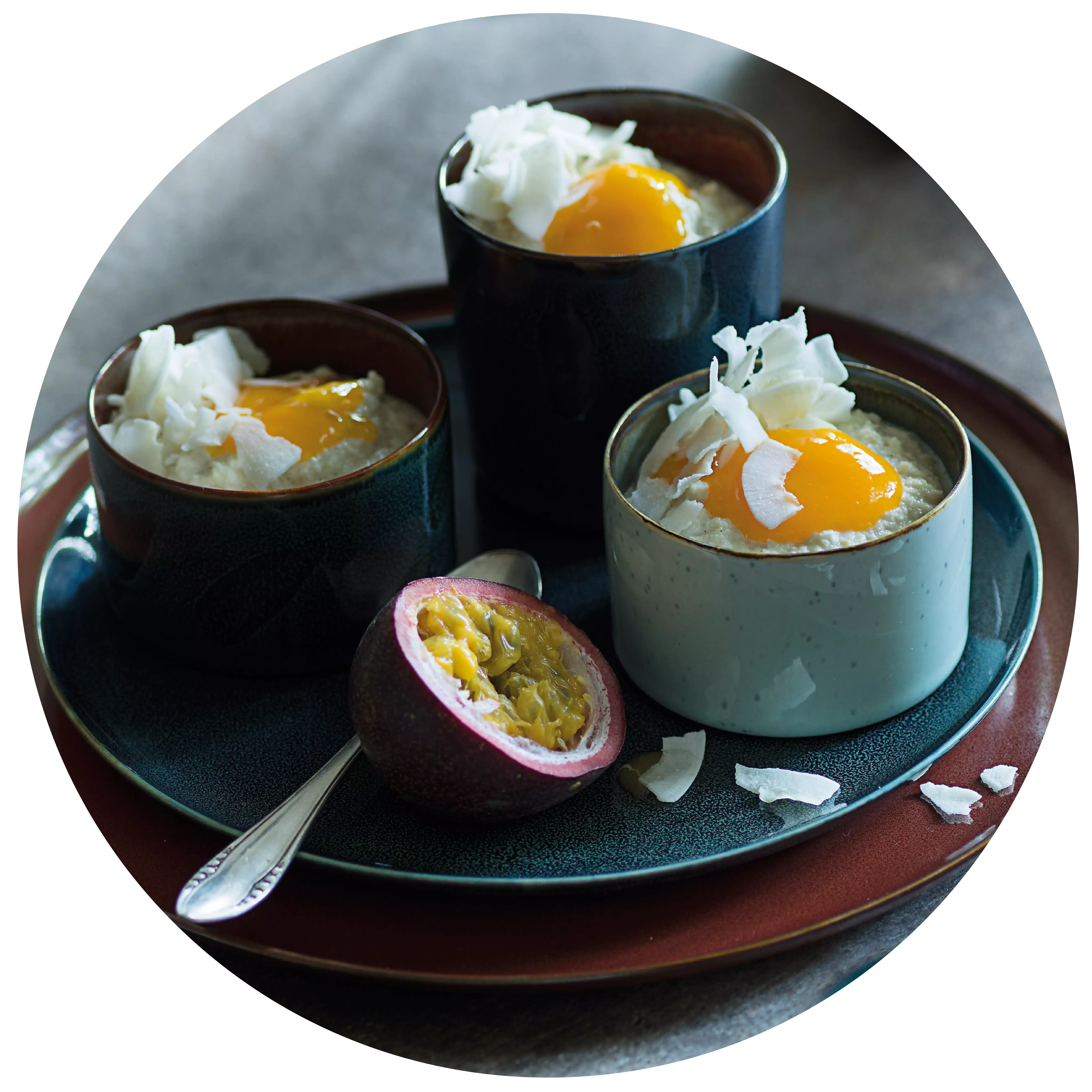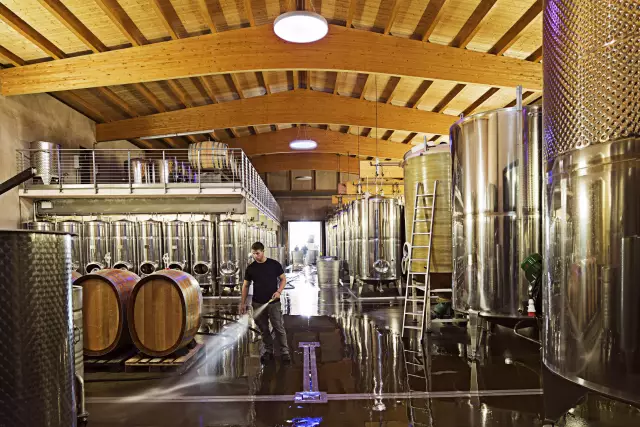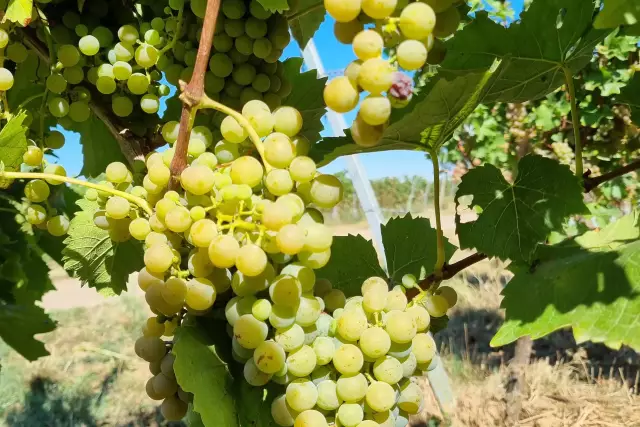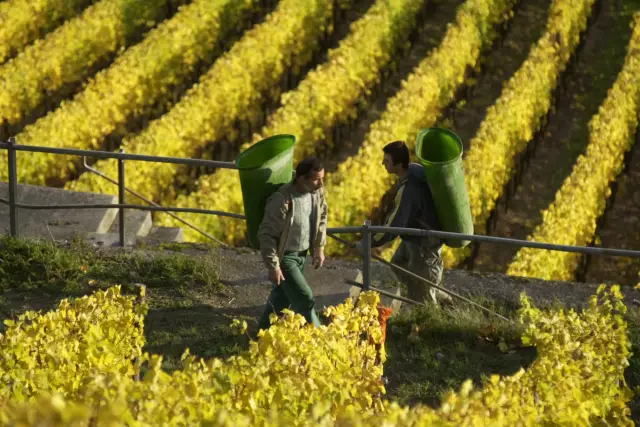Soil & Sites
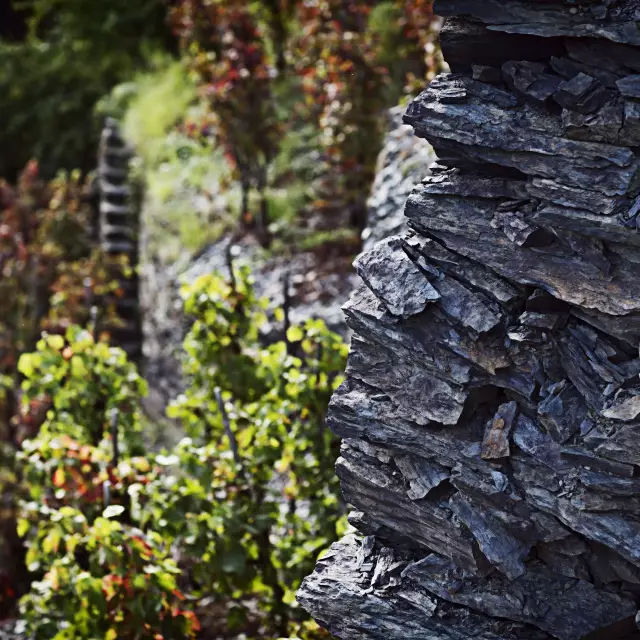
An important factor in the quality of wine is the soil and the location of the vineyard. In Germany, there are a number of different soil structures: from sandy subsoil to loam and loess soils to brittle slate and hard granite.
Facts
-
2.658
unique sites
-
68
degree of slope
-
14.000
hectares steep slopes
Soil and Sites
An important factor for the quality of the wine - in addition to the grape variety and the cultivation method - is the location of the vineyard and of course the soil in which the vines are rooted.
The vine is the mouthpiece of the soil
The soil nourishes the roots, and therefore the vines, with water and nutrients. It also influences heat conservation and consequently, the development of the vine and the ripening of the grapes. Thus, the type of soil and the extent to which it is weathered, can influence the finished wine's aroma and taste.
Germany’s wine-growing regions span a large range of different soil types and structure. It can be seen as nature's memory, stored in the ground. Each recorded geological history produces certain tastes and wine qualities, due to its geographic peculiarities. For example, if the soil is shaped by slate or lime, these components will also be found in the wine and characterize it. It is therefore all these different soil structures in the individual regions - from loose sandy subsoil to loam and loess to brittle slate or hard granite – that guarantee the wide range of unique, distinctive wines from Germany.
The interplay of locations, climate and winegrowers
The best prerequisites for viticulture in Germany are slopes exposed to the south or south-west in protected valleys, such as on the Rhine and its tributaries or on the Elbe, Saale and Unstrut. This is because the sunshine on the slopes is much more intense than on the plain. In addition, the south facing slopes benefit from a longer sunshine duration overall.
Germany's total vineyard area is divided into a number of geographical units, large and small, to distinguish between the two fundamental quality categories of wine that exist within the European Union: Deutscher Wein (former "Tafelwein") and Qualitätswein (quality wine). There are five broad Deutscher Wein regions, further divided into eight subregions for simple Deutscher Wein and 19 areas for the more distinctive wine called Deutscher Landwein.
The largest geographical unit for German quality wine is one of the 13 specified wine-growing regions, subdivided into smaller appellations, e.g. Bereich (district), Großlage (collective vineyard site) and Einzellage (single vineyard site). Over the years, several of the Großlage names have become so well known that they virtually function as brands, particularly in the German supermarket trade and in export markets. Usually, Germany's top-quality wines bear the name of an Einzellage.
All sites of the 13 wine growing regions can be found on the location map.
When it comes to terroir, the soil plays a key role. But the term does not only include the soil structure of the vineyard. Rather, the term ‘terroir’ illustrates the complexity of viticulture, in which several factors interact, complement each other and ultimately form a unity. The concept of terroir is that the wine is a reflection of its particular site and makes the unique character of its origin tastable. That is why it includes not only the soil, but also the grape variety, the special climatic conditions and of course the work of the winemaker. All these factors are summarized under the term ‘terroir’ and are inextricably linked.
The most important factor is certainly the soil itself, which is also a relatively constant factor, as existing soil formations and geographical features generally only change through massive human intervention.
Then it is the winemaker who must recognize which grape variety, considering the specific climate conditions, is best suited for their vineyard and desired wine style. Then they must use this harmonious interplay of soil, climate, grape variety and themselves, to create a unique wine. It is this specificity of terroir, with its respective geographical limits, that offers taste security - and this is precisely the reason for its authenticity. In the right hands, almost any soil formation can produce great wine qualities. Excellent wines from more or less unknown and non-historical vineyards have impressively proven this in the past decades. Taste is the ultimate judge.
Why are soils at sites like the Rote Hang in Nierstein, Rheinhessen, colored red?
The red coloration results from extremely old iron compounds in the soils. Under pressure, loose soil layers eventually developed into solid sand and mudstones, which are infertile but have good heat storage properties.
Varietals

More recipe ideas
Asparagus harmonises perfectly with Silvaner Roasted asparagus with wild garlic and ribbon noodles
Roasted asparagus with wild garlic and ribbon noodles goes perfectly with Silvaner.
- 1kg weißer Spargel
- 1kg grüner Spargel
- 200g Butter
- 1 TL Zucker
- 2-4 EL Walnussöl
- 600g Tagliatelle
- 1 Prise Salz und Pfeffer
- 200 ml Schlagsahne
- 1 Spritzer Zitronensaft
- 8 Bärlauchblätter
Preparation:
Peel the asparagus (green asparagus only in the lower third), cut off the ends. Cut each spear in half lengthways and cut the halves in half. Cut the halves into 3 – 5 cm long pieces.
Heat the butter in a large pan, add the sugar. Caramelise briefly. Add the oil and asparagus and cook over a medium heat for approx. 10 mins. until al dente, tossing occasionally.
In the meantime, cook the tagliatelle in boiling salted water according to the pack instructions until al dente.
Pour the cream into the asparagus and reduce until creamy. Season the asparagus with salt, pepper and lemon juice.
Rinse the pasta, drain and mix with the asparagus. Cut the spring onions into strips and fold in.
Wine recommendation:
Silvaner Spätlese dry
- Silvaner (trocken)
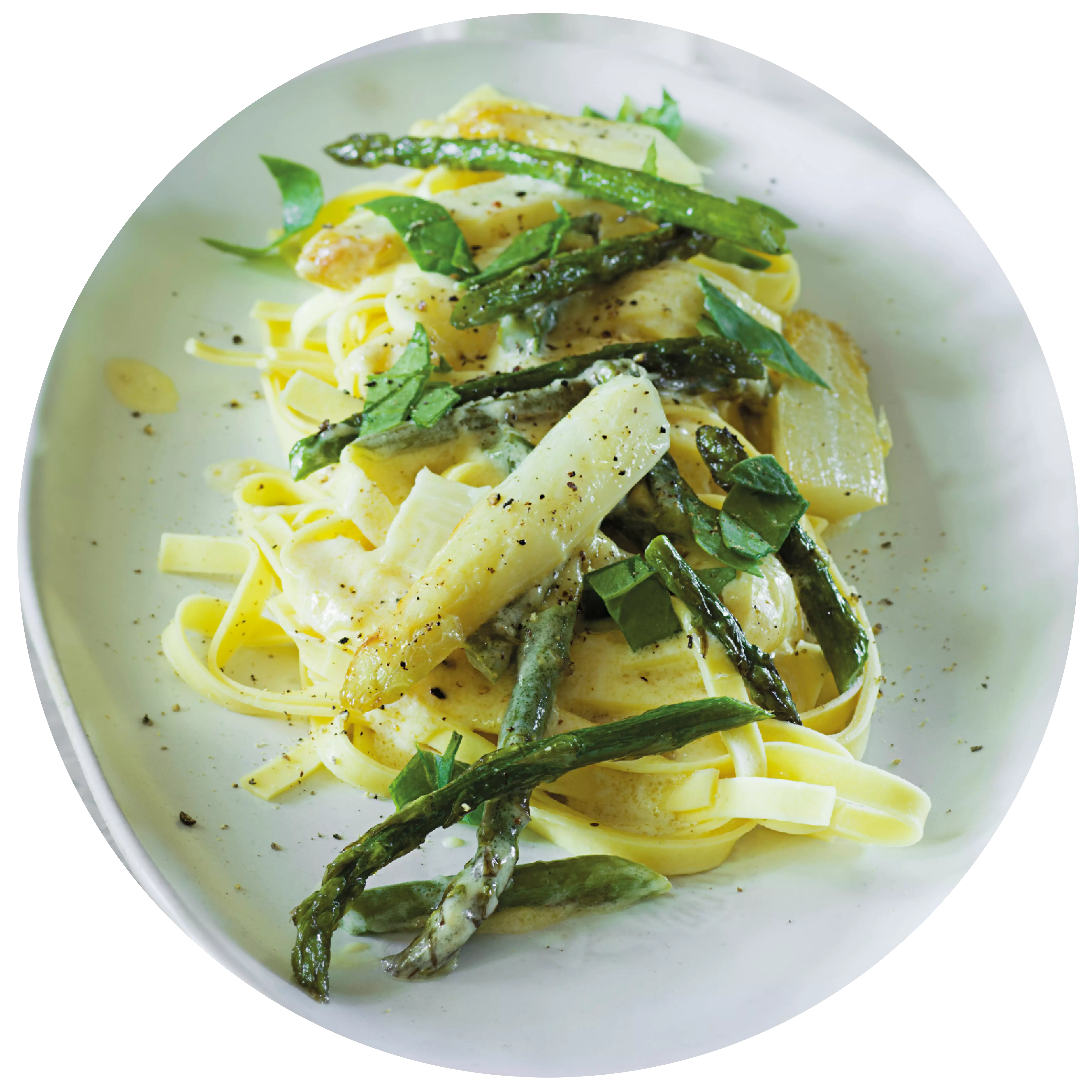
with honey and thyme Goat's cheese tower
with honey and thyme
- 1 großer Apfel
- 1 Rolle Ziegenkäse
- 4 Scheiben Bacon
- 4 TL Honig
- 1 TL Thymian
- 4 Blätter Eichblattsalat
- frische Zweige Thymian zum Garnieren
- nach Belieben Salz & Pfeffer
Preheat the grill to the highest setting.
Fry the bacon slices without fat in a non-stick frying pan until crispy and drain on a piece of kitchen paper. Leave the rendered fat in the pan.
Wash the apple, core it with a corer and then cut it into four, approx. 1 cm thick slices. Slowly fry the apple slices in the remaining bacon fat until just cooked, using the tip of a knife to check the doneness. Place the apple slices in a lightly greased baking dish, sprinkle with thyme and place a crispy fried bacon slice on top of each one.
Divide the goat's cheese into 4 thalers and place one thaler on each apple slice, sprinkle with thyme again and drizzle with 1 teaspoon of honey.
Bake under the grill until the cheese is lightly browned.
Serve the goat's cheese and apple tartlets on a lettuce leaf or, if you prefer, on a bed of lettuce (add a honey-flavoured dressing)
- Dornfelder (halbtrocken & feinherb)
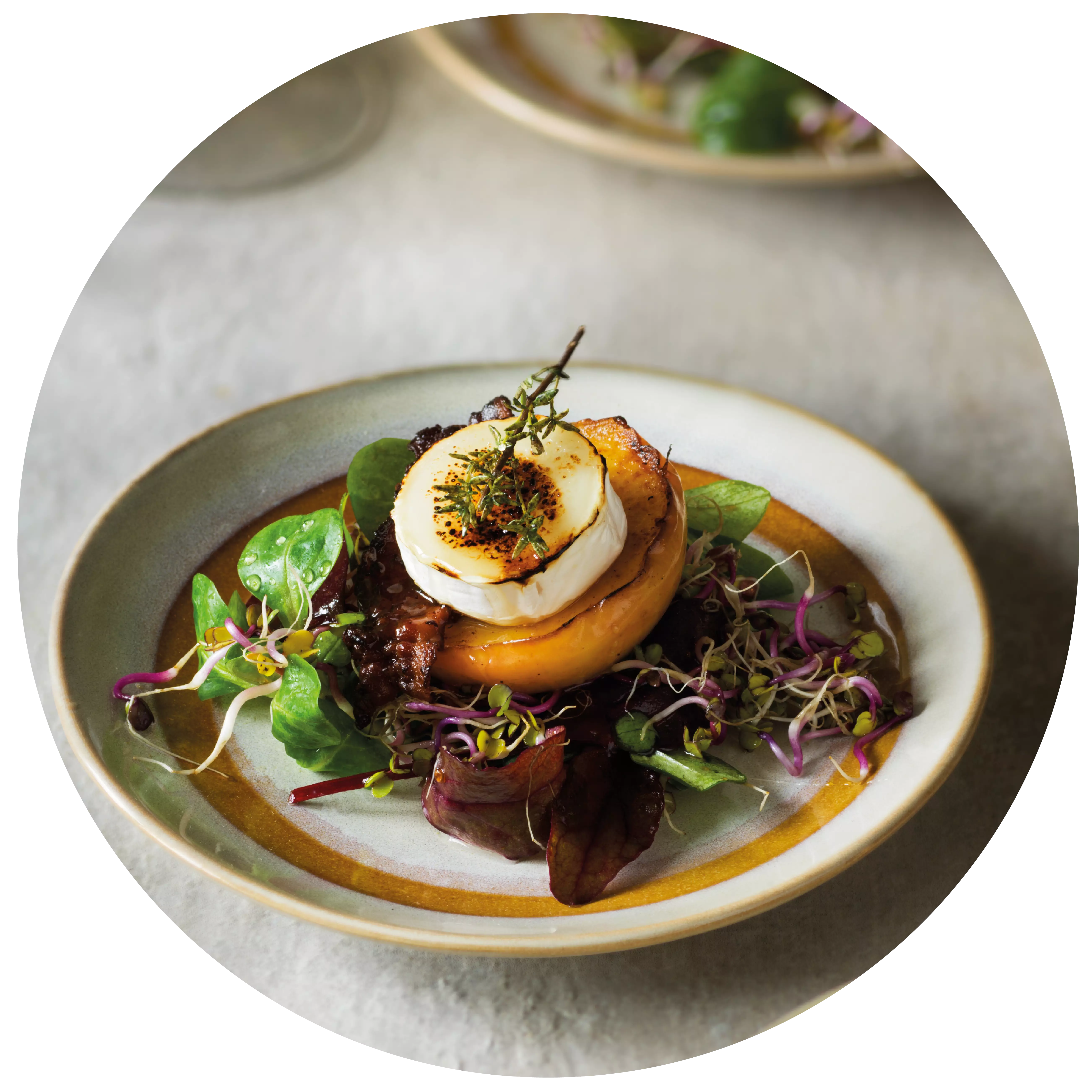
with dry sparkling wine Sparkling wine and lime dessert
with dry sparkling wine
- 300ml Winzersekt
- 4 Limetten
- 100g Zucker
- 30g Speisestärke
- 100g Butterkekse
- 50g ungesalzene Butter
- 2 Eiweiße
- 50g grieschicher Joghurt
- 150g Schlagsahne
Pour the sparkling wine and sugar into a pan. Chill the remaining sparkling wine. Wash 1 lime with hot water and finely grate the zest. Halve the lime and 2 others, squeeze out the juice and mix with the cornflour. Pour everything into the pan and bring to the boil briefly. Remove the pan from the heat and chill the cream in the fridge.
Fill the shortbread biscuits into a freezer bag, crush with a rolling pin and place in a bowl. Melt the butter in a pan, pour over the crumbled shortbread biscuits, add a pinch of salt and mix well. Leave to cool briefly, divide half into large wine glasses and press down firmly.
Cut the lime into slices. Beat the egg whites with salt until stiff. Stir the yoghurt into the chilled champagne and lime cream. Whip the cream until stiff and fold into the cooled cream, one after the other, together with the beaten egg whites. Spread half over wine glasses, add another layer of shortbread biscuits and finish with a layer of cream. Garnish with lime slices and pour in the remaining sparkling wine. Toast and enjoy!
- Riesling (trocken)
- Pinot Blanc (trocken)
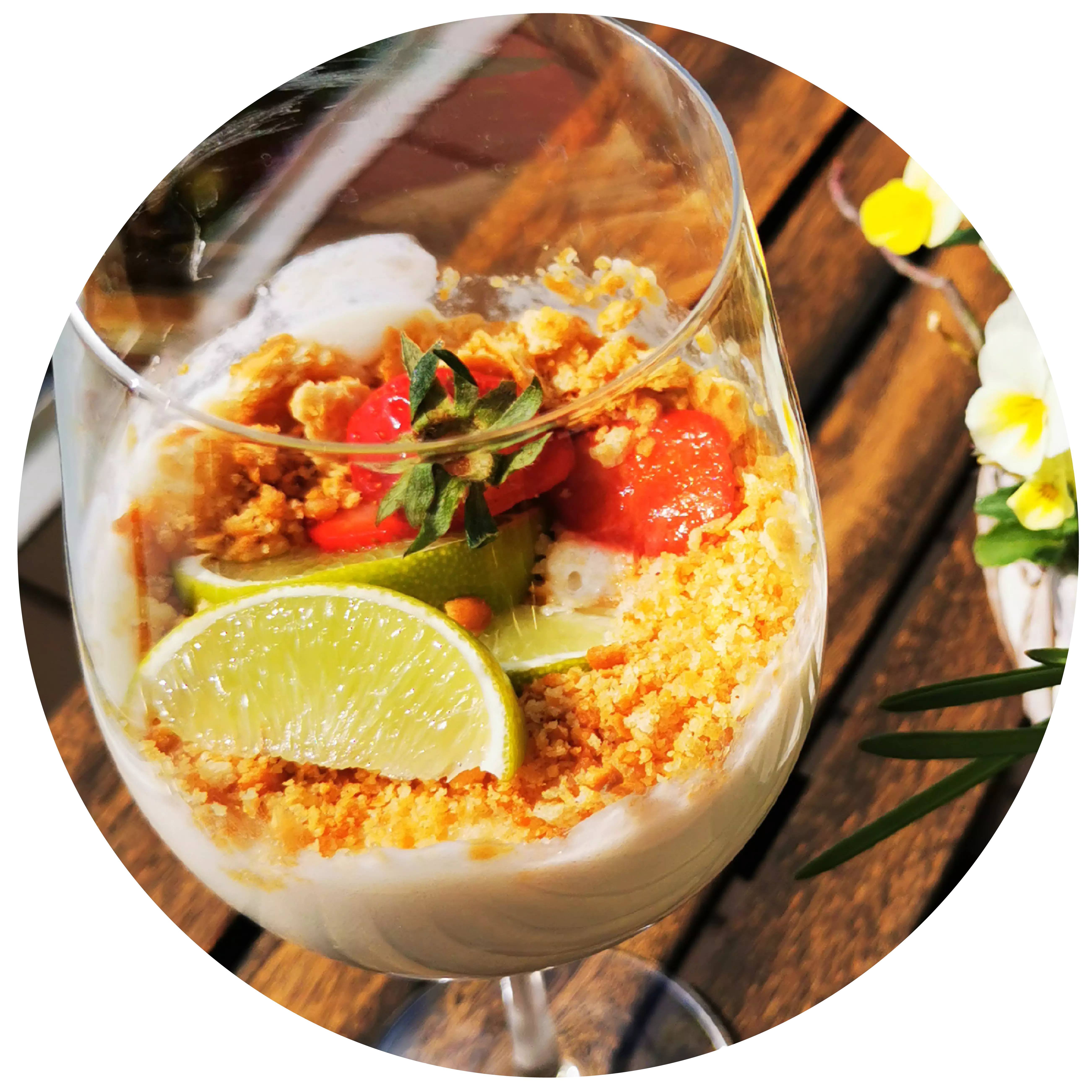
Light and fluffy: cashew coconut mousse with passion fruit Cashew coconut mousse with passion fruit
An airy cashew coconut mousse with passion fruit
- 400g Cashewkerne
- 400ml Haferdrink
- 6EL Agavendicksaft
- 6EL Kokosflocken
- 4 Passionsfrüchte
- 1 Prise Vanille
Place the cashews in a container and add enough water to cover the cashews sufficiently. Place the cashews in the fridge to soak overnight.
(With a high-performance blender, 3-4 hours is also sufficient.)
Drain the water and place the cashews in the blender with the oat milk, agave syrup and coconut flakes. Add the vanilla and blend until the mousse is creamy and no longer contains any chunks.
<p
<p>Divide the mousse between four glasses. Halve the passion fruit, scrape out the flesh with a teaspoon and place on top of the mousse. Decorate with coconut flakes.
- Pinot Blanc (süß & edelsüß)
- Riesling (süß & edelsüß)
